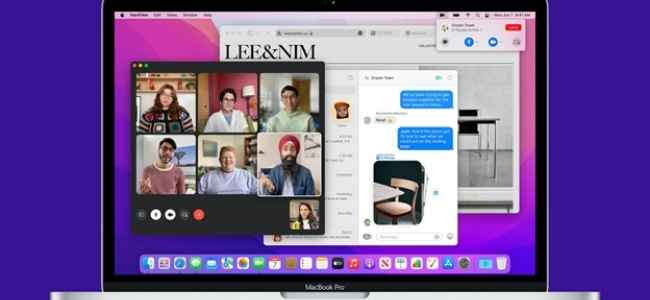You, I and we all know that Apple always goes through constant updates with the aim to keep their customers going ‘wow’ every time and also enhance the user experience with all the positive impact. Among all the big changes and constant introduction to new things and upgrade, macOS Monterey is one of the most iconic updates of all time. Why?
macOS Monterey beta arrived in this month and will be released in the fall of 2021. Monterey add several powerful features. This update changed ways for users to connect, get more done, and work more fluidly across their Apple devices. The thing with the macOS Monterey software update is that it is beta software, meaning that the software developers are essentially releasing this younger version as a test run, to see where the software prevails and where it falls short of expectations.
Considering this scenario, it is important to be aware of how you will read and write your NT file system (NTFS) formatted files on your Mac that has macOS Monterey Beta. This article intends to highlight the ways to use NTFS drives while using the macOS Monterey beta.
Enable Mac Writing to NTFS Drives Using Terminal in macOS Monterey Beta
If you are using a Mac for some time or a long time, perhaps, you are aware of Terminal which is actually integrated with the system itself. Hence, using Terminal in macOS Monterey betato read and write your files on drives involves working more closely with your Mac computer inside the system. Realistically, if you want to use Terminal with the view to enabling NTFS writing, this should need some technical knowledge and practice. But stress-out about it. Just follow these instructions as below to enable Mac NTFS writing drives in Terminal:
- First you need to eject USB Drive on Windows.
- Next, label the NTFS drive you want to use with a one-word name.
- Launch a Terminal open by pressing Command and the Space Bar at the same time. Type “Terminal” and hit the enter key.
- Once you are in Terminal, type the following line of code:
- sudo nano /etc/fstab
6. Add this code “LABEL=NAME none ntfs rw,auto,nobrowse” to the terminal, and replace the section “NAME” with the name of your USB flash drive with the NTFS drive you want to use.
7. Select the Control key and the letter “O” key to save this new file, press “Enter” and then press both the Control key and the letter “X” key to close the GNU.
8. Unplug the flash drive and then reconnect the flash drive to the USB flash drive port.
9. To access the files and the drive, click on “Go” then go to the folder tab. Type in “/Volumes” into the search box. Now, you should be able to access the NTFS files that are on the drive and change or use them in any way you want.
Using Third-Party NTFS Drives
This is so far the best way to read and write your NTFS file regardless of the size and volume of files it contains. Also, if you are using a third-party NTFS drive to enable NTFS for Mac, you will not only get to read and write your external drive easily on your Mac but mind relaxation undoubtedly.
One way to get your Mac computer to read and write NTFS drives is to utilize the benefits of a third-party app or NTFS driver. The best application? Well, iBoysoft NTFS for Mac is winning the game with other support providers because it’s compatible with macOS Monterey beta. And also, this Microsoft NTFS for Mac by iBoyosft has dynamic and essential features and it is really user friendly as it goes through constant updates to enhance user experience and cope with innovation. Using this means that you essentially add a processor onto your computer that can process, read, and write NTFS files such as HDD, SSD, or flash drive with Windows formatting or features.
How to use iBoysoft NTFS for Mac on macOS Monterey beta?
1.Download and install iBoysoft NTFS for Mac.
2. Restart your Mac computer.
3. Launch this NTFS for Mac app and connect the external hard disk to your Mac.
4. After the external drive is mounted successfully, you can fully read and write to the drive on Mac.
In addition, this app allows you to edit, copy, move, delete, and read NTFS files from your Mac computer. It is super-fast and has a really easy interface so you do not get confused during the process. Not to mention, this method is one of the most common because it is super easy and iBoysoft NTFS for Mac is so accessible.


